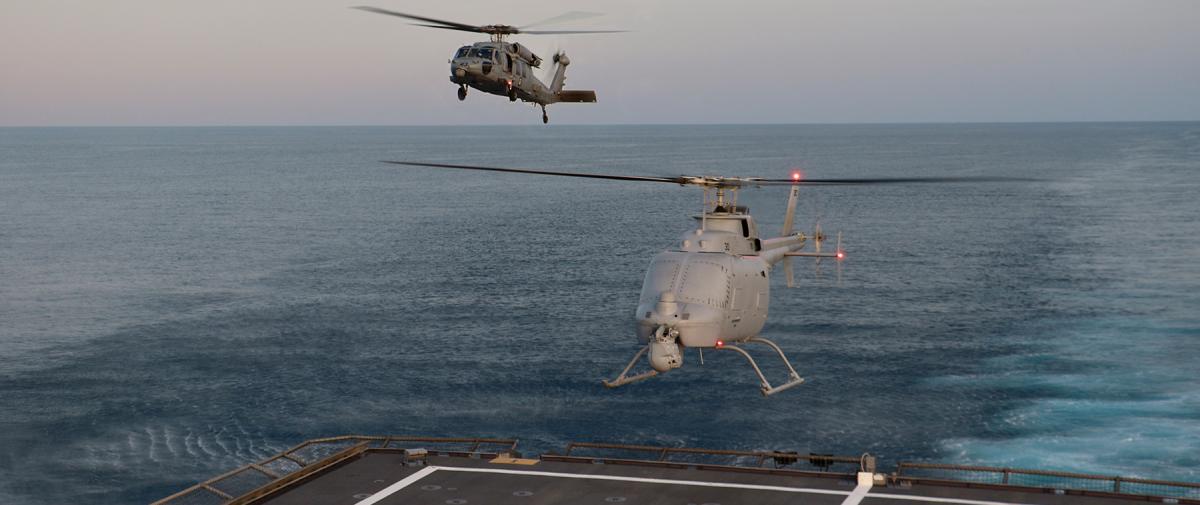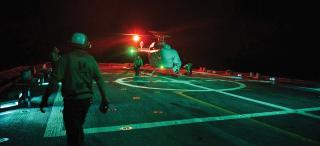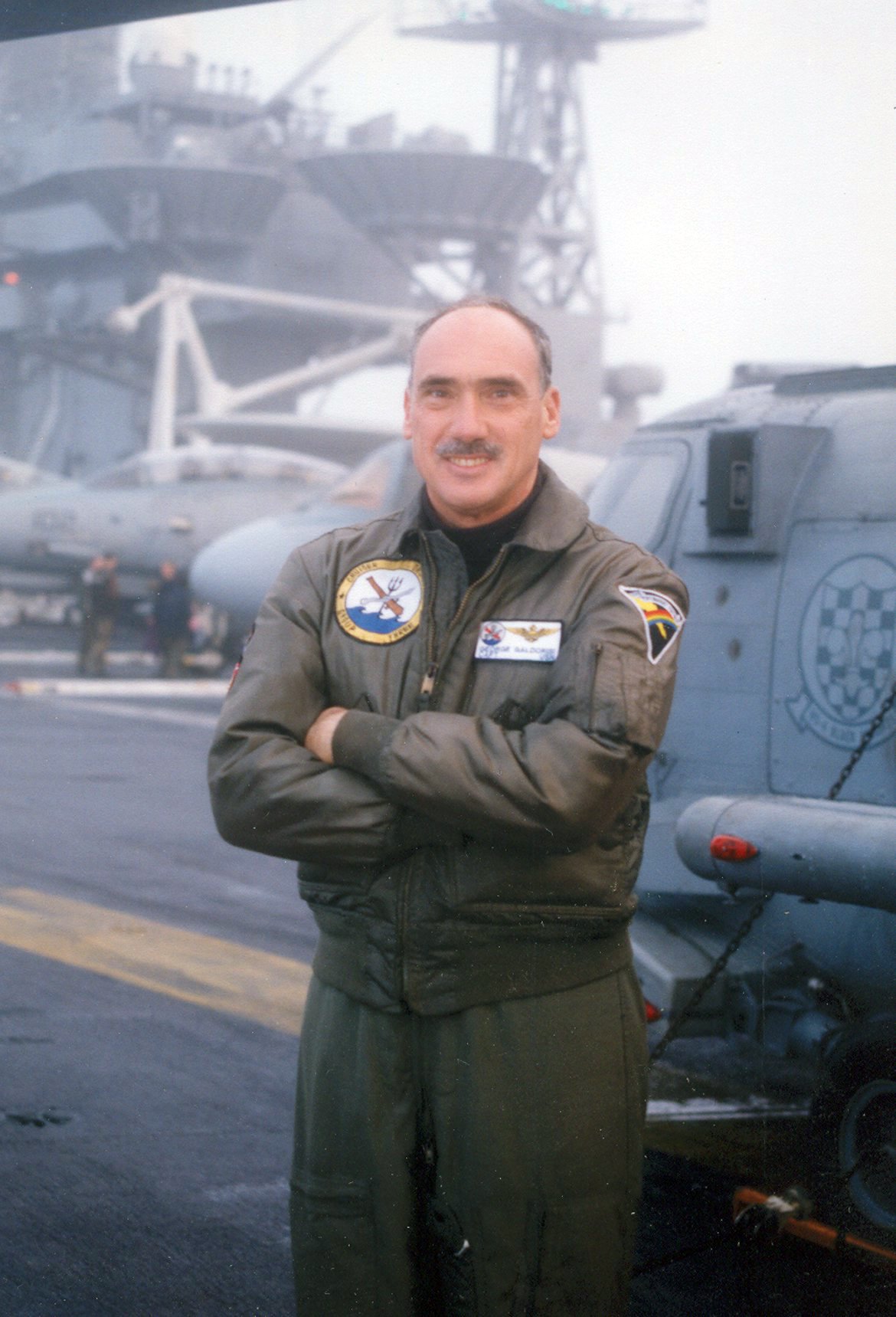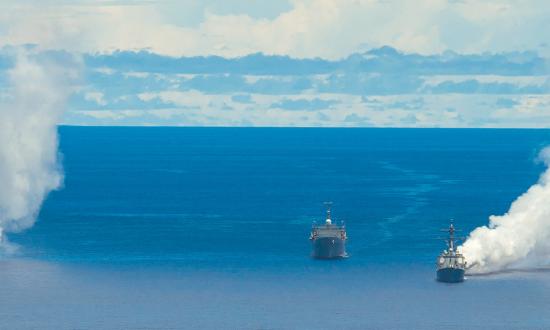Humans versus machines is a false choice. The best systems will combine human and machine intelligence to create hybrid cognitive architectures that leverage the advantages of each.
—Paul Scharre, Centaur Warfighting:
The False Choice of Humans vs. Automation
The U.S. military has adopted the term “manned-unmanned teaming” to describe a desired end-state in which people and machines work together in combat. There is a rich history of theorizing what this partnership might look like, with papers such as “Man-Computer Symbiosis” appearing as early as 1960.1
Recognizing, intuitively at least, that people and machines will work together on future battlefields is good—as far as it goes. But for this aspiration to be realized, policy-makers, strategists, technologists, ethicists, and others must work in concert to build not just “brilliant machines,” but ones designed to work with humans who trust them to be battlefield teammates.
The Navy’s vision for unmanned systems is embodied in the Unmanned Campaign Framework (2021). This governing document is designed to “coordinate unmanned systems efforts across the Department and advance manned-unmanned teaming effects within the full range of naval and joint operations.” The Navy’s commitment to—and dependence on—unmanned systems is also seen in its force structure assessment, as well as in a series of future fleet architecture studies. In each, the proposed future fleet architecture had large numbers of air, surface, and subsurface unmanned systems.2
Senior leaders are saying all the right things about the importance of manned-unmanned teaming. But their words must be accompanied by concrete actions to write the algorithms that enable unmanned platforms to be “loyal wingmen.” Consider aviation for a specific Navy use case.
The MQ-8C and MH-60S
While littoral combat ships (LCSs) have deployed multiple times with the MH-60S Knighthawk and MQ-8C Fire Scout, there is little evidence of even a glimmer of real manned-unmanned teaming. Rather, these are two aviation platforms operating together from the same seaborne airport.
A strike group ship commander might use an MQ-8C Fire Scout embarked on an LCS to perform a scouting mission. The other half of this particular “manned-unmanned teaming” package is an MH-60S Knighthawk helicopter.
The Fire Scout is controlled not by the pilots in the Knighthawk, but by operators at a console inside the LCS. Operating in this fashion, the Fire Scout is not autonomous—it is a remotely piloted vehicle. This concept of operations (ConOps) is a good start—that is, getting both air platforms to sea operationally—but it limits the utility of each, requires extra manpower (always in short supply), and does nothing to advance manned-unmanned teaming.
The Navy must apply work underway elsewhere—quantum computing, big data, artificial intelligence (AI), and machine learning—to enable the MQ-8C to be a loyal wingman to the MH-60S. As Air Force Lieutenant General Jack Shanahan, founding director of the Joint Artificial Intelligence Center, has put it: “I would be so bold to suggest the DoD should never buy a weapons system for the rest of its natural life without artificial intelligence baked into it.”3
The first step will be upgrading the Fire Scout with AI and machine learning so it can operate fully autonomously. Once the Fire Scout leaves the LCS, it comes under the control of the Knighthawk. Consider a current operational example: An LCS is stationed in the northern Arabian Gulf as part of the effort to intercept Iranian arms bound for Yemen.
Hunting Arms
The LCS is operating approximately 30 miles east of Kuwait City and has been tasked to surveil the area near the Iranian port of Bushehr. The Knighthawk mission commander has overall control. Once the Fire Scout launches, it responds to direction from the Knighthawk in much the same way as a smartphone responds to voice questions or commands. Conversation between the two platforms might look like this:
Knighthawk: We’re heading east-southeast toward Bushehr; stay on my wing.
Fire Scout: Roger that. Fuel state 13+15, cherubs five.
Knighthawk: Elevate to angels three for a better radar picture.
Fire Scout: Roger, climbing.
Knighthawk: I’m going to head due east; you take up a heading of 135.
Fire Scout: Roger, vectoring.
Knighthawk: We’re looking for oil tankers, so keep an eye out for those ships.
Fire Scout: Just large oil tankers?
Knighthawk: Negative; look for smaller coastal oil tankers as well.
Fire Scout: WILCO. . . .
Fire Scout: I found a midsize oil tanker.
Knighthawk: Send me the video.
Fire Scout: Coming over the link now.
Knighthawk: Got it. Query its automatic identification system.
Fire Scout: WILCO. Wait. He isn’t sending that. Do you want me to close and get a better look?
Knighthawk: Negative, we don’t want to spook him.
Fire Scout: Roger.
Knighthawk: I’m sending the video to the analysis team at Fifth Fleet. Stand by.
Fire Scout: This guy is on a heading of 165, making 12 knots.
Knighthawk: Roger. Keep your distance, but follow him.
Fire Scout: WILCO.
Knighthawk: I’m returning to home plate to refuel. Keep tabs on our guy.
Fire Scout: WILCO.
The conversation continues, and it is clear operating in concert maximizes the capability of both manned and unmanned platforms and enables them to conduct an ISR mission—without tying up additional manpower to drive the Fire Scout. With an endurance of 15 hours, the Fire Scout can be tasked to continue the mission while the Knighthawk refuels.
It is worth noting what a loyal and smart wingman the Fire Scout has become. It does not simply respond to commands; it volunteers information such as fuel state and altitude it suspects is of value to the pilots in the Knighthawk, asks for additional information when instructions are not clear, and even “nudges” the Knighthawk pilots with the contact’s course and speed when it senses its manned counterpart is not being aggressive enough.
Far from being a challenging engineering and coding effort, this degree of manned-unmanned teaming is well within the scope of code being written today in both the civilian and military sectors. Code for each platform can be written in concert.
This is the essence of manned-unmanned teaming. Will this simple ConOps—involving just one class of Navy ship and two air platforms—change naval warfare as we know it? No. But it will beta-test manned-unmanned teaming in an operational environment and pave the way for other teams—such as a P-8 Poseidon and an MQ-4C Triton, an E-2D and an ISR-capable MQ-25 Stingray, or any number of Navy ships operating various unmanned surface vehicles—to operate together in a similar fashion.
Humans and Machines
Even some who work on AI for the U.S. military can be conflicted regarding inserting AI into weapon systems. Perhaps the best way to understand this is to consider one of the most recognized photographs from World War II. Taken by First Lieutenant John Moore of the Army Signal Corps, it depicts General Dwight D. Eisenhower talking with men of the 101st Airborne Division on 5 June 1944, the day before the invasion of Normandy. Previously, Eisenhower had been briefed that the 101st would suffer 80 percent casualties during the invasion.4
Those who study the effect of unmanned systems on military operations—especially those who are strong advocates of unmanned systems—can look at this photo and envision General Eisenhower speaking not with airborne soldiers, but with robots he will send into battle, sparing U.S. soldiers death or injury. Those who fear unmanned systems might picture the airborne soldiers as the photo depicts them, but instead of General Eisenhower, they would envision a robot commanding the soldiers—clearly an untenable situation.
However, the most effective version might envision General Eisenhower addressing a team of paratroopers standing with their robot partners, each bringing unique talents to the battlespace.
The speed of warfare often exceeds the ability of the human brain to make the right decision. Manned-unmanned teaming will be more than just providing warfighters with a loyal wingman or battle buddy. In tomorrow’s complex battlespace, where warfare speeds up dramatically, the human will need assistance from an AI-enabled partner to prevail. A loyal and smart wingman will be a requirement, not just a nice-to-have.5
A closer human coupling is precisely what manned-unmanned teaming can bring, but only if aspirational vision is matched by concrete actions. To use a baseball metaphor: Rather than swinging for the fences and taking on massive projects, defense leaders would be better served to go for a base hit, or even a drag bunt, to get small wins early. A Knighthawk–Fire Scout mash-up like the example above would be a great start.
1. J. C. R. Licklinder, “Man-Computer Symbiosis,” IRE Transactions on Human Factors in Electronics, HFE-1 (March 1960).
2. Navy Project Team, Report to Congress: Alternative Future Fleet Platform Architecture Study, 27 October 2016; MITRE, Navy Future Fleet Platform Architecture Study, 1 July 2016; and CSBA, Restoring American Seapower: A New Fleet Architecture for the United States Navy, 23 January 2017.
3. “AI to Help Pentagon Prep for Algorithmic Warfare,” Government CIO Media and Research, 6 November 2017.
4. Sam Tangredi and George Galdorisi, eds., How Big Data, Artificial Intelligence and Machine Learning Are Changing Naval Warfare (Annapolis, MD: U.S. Naval Institute Press, 2021).
5. Riya Kumari, “7 Differences between Artificial Intelligence and Human Intelligence,” analyticsteps.com, 3 January 2021.








